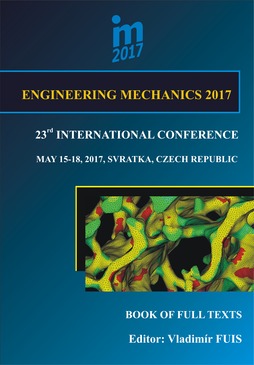Proceedings Vol. 23 (2017)

ENGINEERING MECHANICS 2017
May 15 – 18, 2017, Svratka, Czech Republic
Copyright © 2017 Brno University of Technology, Faculty of Mechanical Engineering, Institute of Solid Mechanics, Mechatronics and Biomechanics, Brno
ISSN 1805-8248 (printed)
ISSN 1805-8256 (electronic)
list of papers scientific commitee
pages 466 - 469, full text
This paper presents results of measurements of static pressure distribution and pressure fluctuation on inner surfaces of the reverse chamber. Analyzed geometry is a geometrical model of the combustion chamber occurring, inter alia, in solid fuel boilers. An important aspect of the analysis is identification of reversing phenomena occurring inside the chamber. Due to the analyzed geometry shape, the flowing jet flow changes twice the direction of the jet impingement on the wall. As a result, on the walls of the chamber there is a transformation of medium kinetic energy into potential energy pressure. The test results describing the distribution of pressure on the impinged wall of the reverse chamber and pressure changes and fluctuations for various inflow velocities and various distances between the pipe outlet and the impinged surface have been presented. Characteristics of turbulent flow in chamber were measured with the use of constant temperature anemometer. The purpose of the paper is to indicate differences between different flows: an axisymmetrical free jet outflowing to the stationary surroundings, a jet impinging a stationary flat surface, and a jet flow impinging flat surface in close round chamber, which generates axisymetrical return flow. Efficiency being a part of the conducted analysis of the flow in the combustion chamber, was also used to prepare a mathematical model for numerical analysis. This analysis shows also that there is a need to validate CFD calculations due to limited possibilities of turbulence models to visualize the transformation of energy at the stagnation points.
back to list of papers
Text and facts may be copied and used freely, but credit should be given to these Proceedings.
All papers were reviewed by members of the scientific committee.

 Powered by
Imce 3.20 © 2023, Pavel Formánek, Institute of Thermomechanics AS CR, v.v.i. [generated: 0.0108s]
Powered by
Imce 3.20 © 2023, Pavel Formánek, Institute of Thermomechanics AS CR, v.v.i. [generated: 0.0108s]